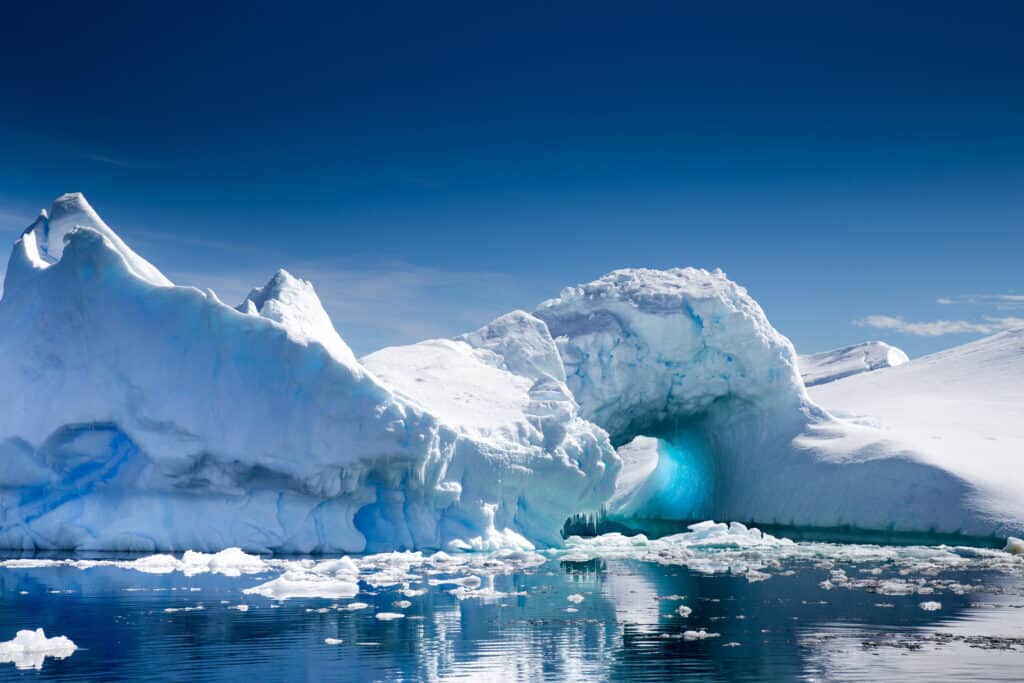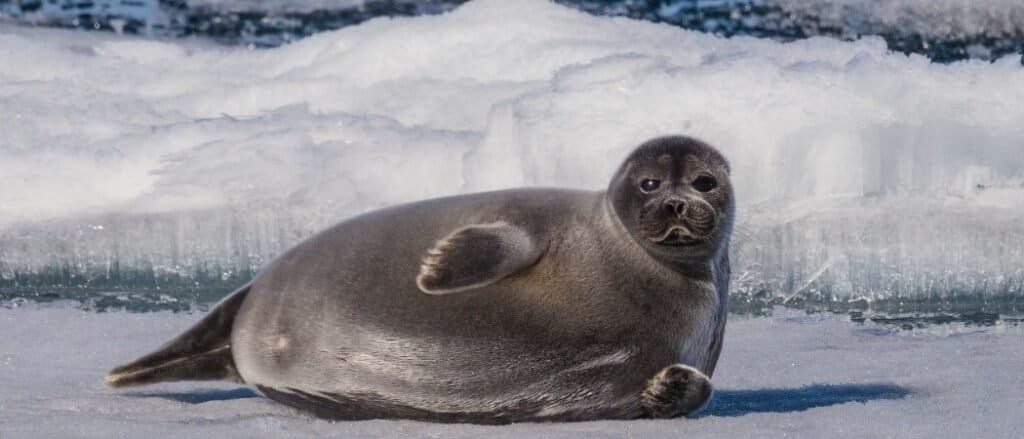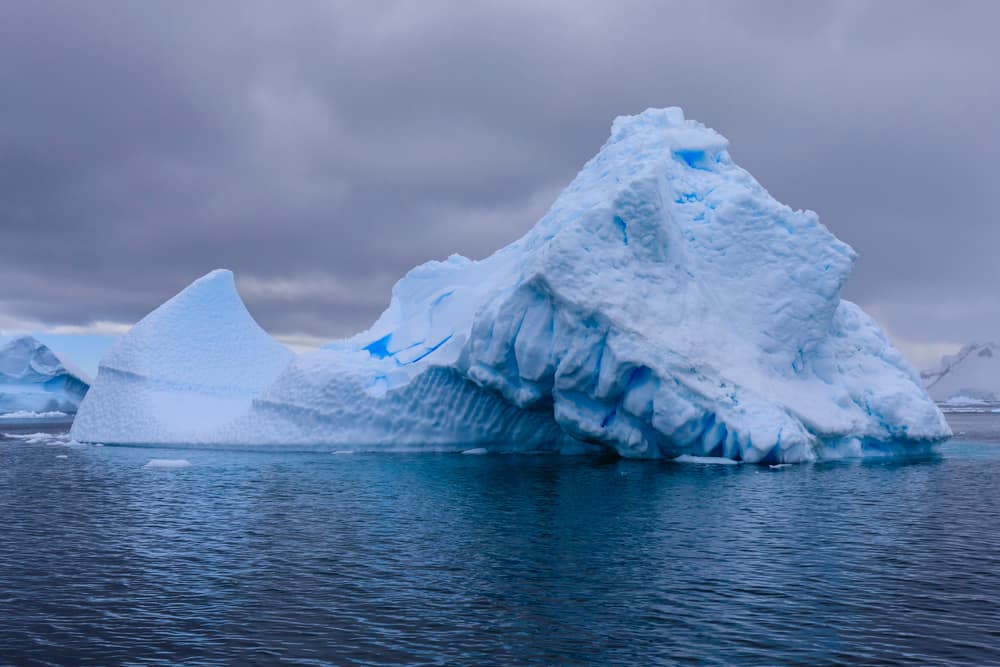The coldest water in the world is around Antarctica, the continent that covers the Earth’s South Pole. Antarctica is covered by the Antarctic ice sheet, which is the largest mass of ice on Earth. The coldest water in the world is the Antarctic bottom water of the Antarctic Ocean, with temperatures between 33.4-35.6 °F (0.8-2 °C). This cold water is crucial to the health of the Earth’s oceans. This article explores Antarctic bottom water, including how long a person could survive in it and the important role it plays in worldwide ocean health.

Antarctica is a completely frozen continent the size of the United States and Mexico combined.
©robert mcgillivray/Shutterstock.com
What Is the Coldest Ocean in the World?
The coldest ocean in the world is the Antarctic Ocean, which surrounds the continent of Antarctica. The Antarctic Ocean lies below the 60th parallel south latitude. At 7,848,000 square miles, it is the second smallest of the Earth’s five oceans. The deepest point of the Antarctic Ocean is 24,390 feet deep. At the bottom of this ocean lies the coldest water in the world, the Antarctic bottom water.
Overturning Circulation of Antarctic Bottom Water
Antarctic bottom water is important for the circulation of nutrients across all of the Earth’s oceans. This water is formed in several locations around Antarctica. These include the Weddell Sea, the Ross Sea, the Adélie Coast, and Cape Darnley. The water forms from surface water that cools due to being around and under sea ice. Extremely cold Antarctic winds also contribute to cooling the water. This water is the densest water mass on Earth, which causes it to sink to the ocean floor. It then flows north underneath the ocean waters of the southern hemisphere. Once the water travels north and begins to warm, it eventually rises. This cycle is called “overturning circulation”. It is important for moving carbon and nutrients around the Earth’s oceans, and vital for bringing oxygen to the deep ocean.
The coldest water in the world is vital to this cycle, which keeps the Earth’s climate stable. However, in recent years the cycle has slowed by 30%. As Antarctic Sea ice melts, it makes the surface water less dense. It is then less likely to sink to the ocean floor. Climate science has long predicted that this cycle would slow, but the current rate far exceeds those predictions. When the overturning circulation cycle slows, the deep ocean does not get the amount of oxygen it needs to support the animals that live there. Although deep-sea animals are adapted to survive in low-oxygen conditions compared to other parts of the ocean, they do still require oxygen to survive. Additionally, the slowing of the overturning circulation cycle contributes to sea level rise. As Antarctic bottom water is replaced by slightly warmer water, the warmer water takes up more space due to thermal expansion. This causes sea levels to rise.
What Is the Coldest Lake in the World?
The coldest lake in the world is Lake Baikal in Russia. It also happens to be the largest freshwater lake in the world. Lake Baikal is in Southern Siberia. The lake freezes during winter, becoming an ice lake.

The Baikal seal is endemic to Lake Baikal.
©iStock.com/Streluk
What Is the Coldest Water You Can Survive In?
Hypothermia is a drop in body temperature, usually caused by exposure to cold weather or cold-water immersion. For hypothermia due to cold water immersion, the severity of the hypothermia is affected by both the water temperature and how long the person is in the water. The colder the water is, the shorter the amount of time a person can survive in it. A person can survive submersion in incredibly cold water, but not for very long.
According to the National Weather Service, 60 °F is the temperature at which people begin to experience cold water shock. In 50-60 °F water, a person can survive for one to six hours. The expected survival time rapidly decreases in colder water. In 40-50 °F water, a person can survive one to three hours. Below that, humans cannot survive for very long.
How long can a person survive in Antarctic bottom water? A person could not actually survive in Antarctic bottom water due to the immense pressure in the deep ocean. However, let’s explore how long a person can survive in water as cold as Antarctic bottom water. Antarctic bottom water is 33.4-35.6 °F. In 32.5-40 °F water, a person can only survive for 30-90 minutes. However, a person would struggle to move within just three minutes of submersion. A person would become exhausted or unconscious in 15-30 minutes.
Thank you for reading! Have some feedback for us? Contact the AZ Animals editorial team.








